Disc harrow with daisy discs and roller
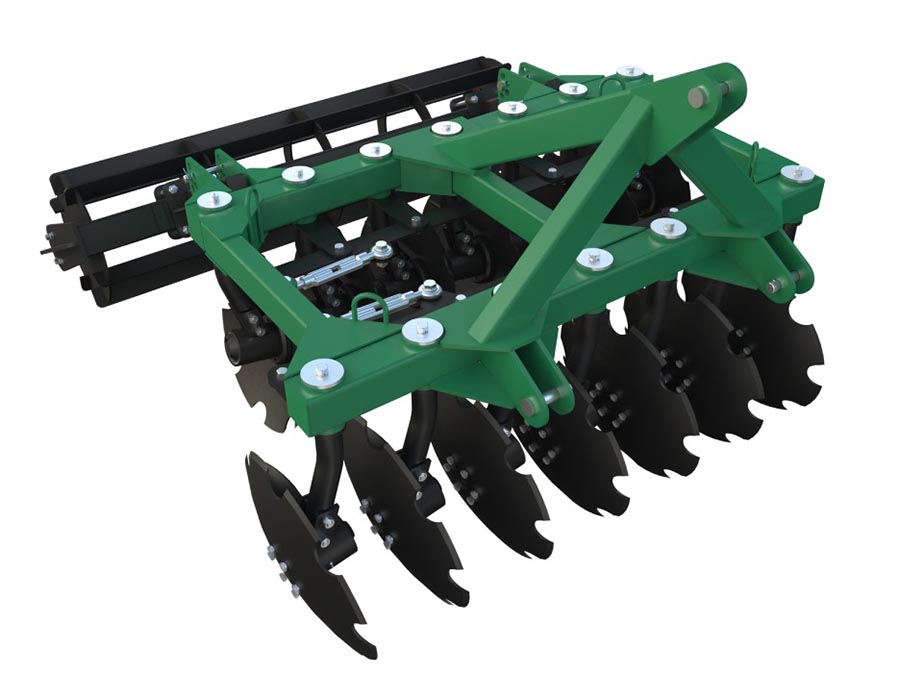
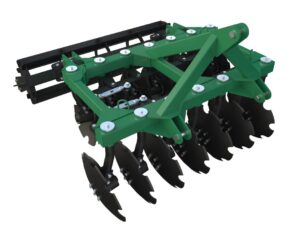
Soil disc harrowing, tractor disc harrowing, field disc harrowing – this agricultural technique has largely replaced the use of toothed or even bladed harrows. The reason for this is the significant durability of disc harrows and their long operation time without the need for repairs.
We offer soil disc harrowing services, including with heavy reclamation disc harrows. We carry out disc harrowing using tractors equipped with disc harrows. Disc harrowing can be used for chopping and breaking turf, as well as for plowing fertilizers and seeds into dense soils. Essentially, disc harrowing involves shallower tilling but more thorough mixing of the topsoil layer, cutting roots and stems of weeds and small shrubs.
– Disc harrowing by tractor: Price US$250 per hectare. For areas larger than 10 hectares, the price is reduced.
– Harrowing abandoned or overgrown land with heavy reclamation disc harrows: up to US$400 per hectare.
Disc harrowing by tractor is used for working with neglected lands that were previously cultivated. After several years of disuse, plowed fields become overgrown with grass, shrubs, and young trees. In such cases, plowing with a plow is a less profitable way to restore the land than using heavy disc harrows. Disc harrowing is the smarter solution in these situations.
Disc harrowing is also performed after plowing. If the field was plowed in autumn after the harvest, it is advisable to perform disc harrowing in the spring. This process is called stubble harrowing. If the soil is not treated with a disc cultivator after plowing, it will remain coarse and unsuitable for use. Turf-covered soil cannot be used without breaking up the sod layers. In other words, it is impossible to use a seeder without first using a tractor with a disc harrow.

Disc harrow with daisy discs and roller
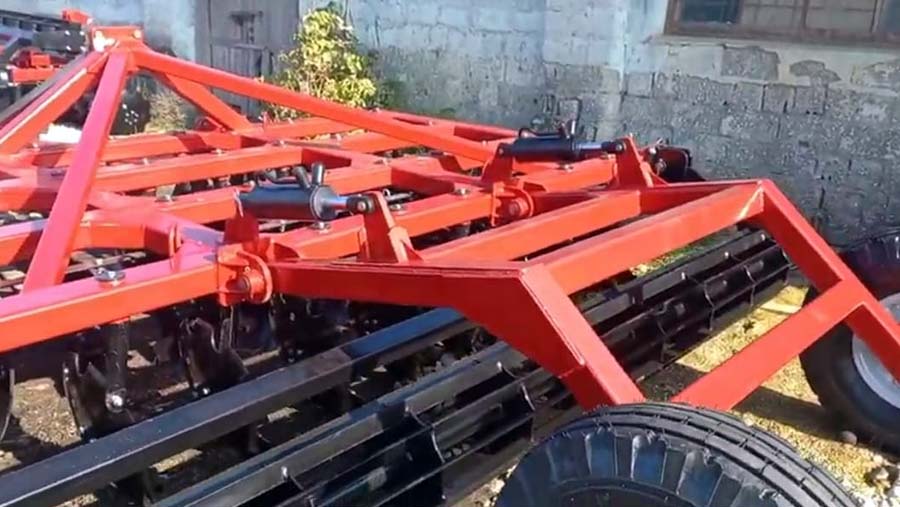
a kind of a disc harrow with a roller
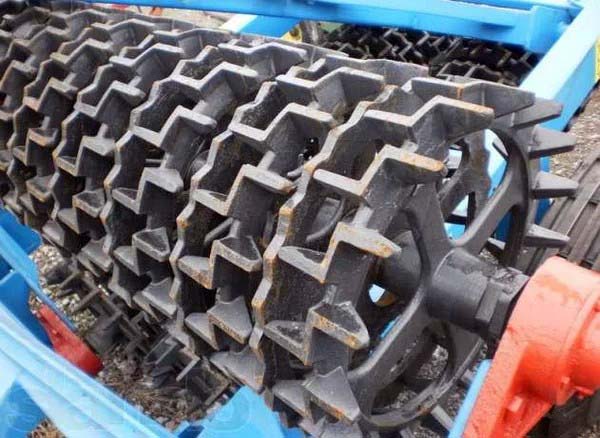
ringed spur roller for harrow
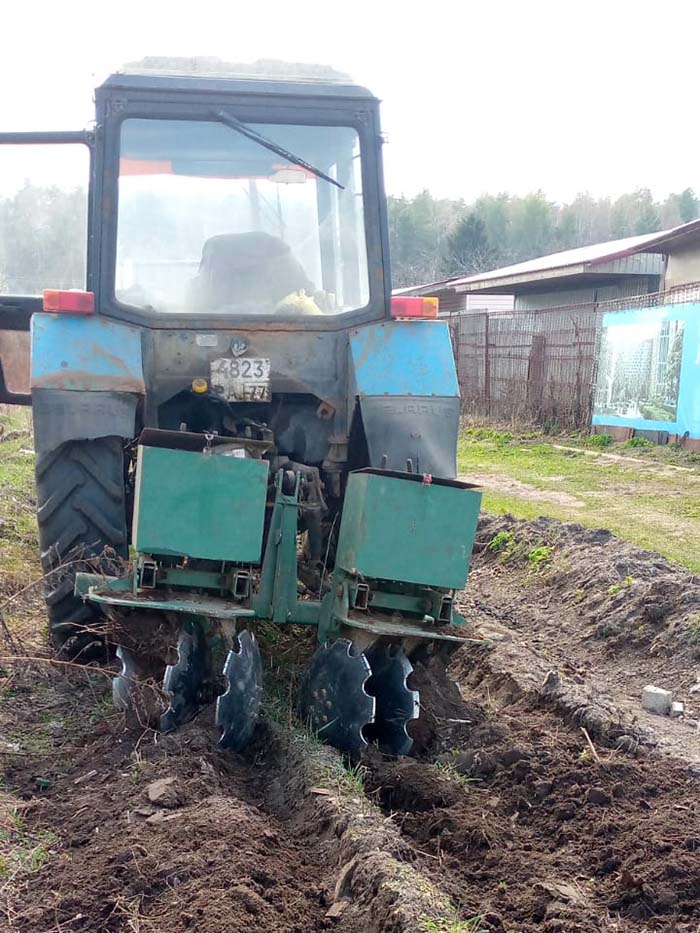
soil disc harrowing
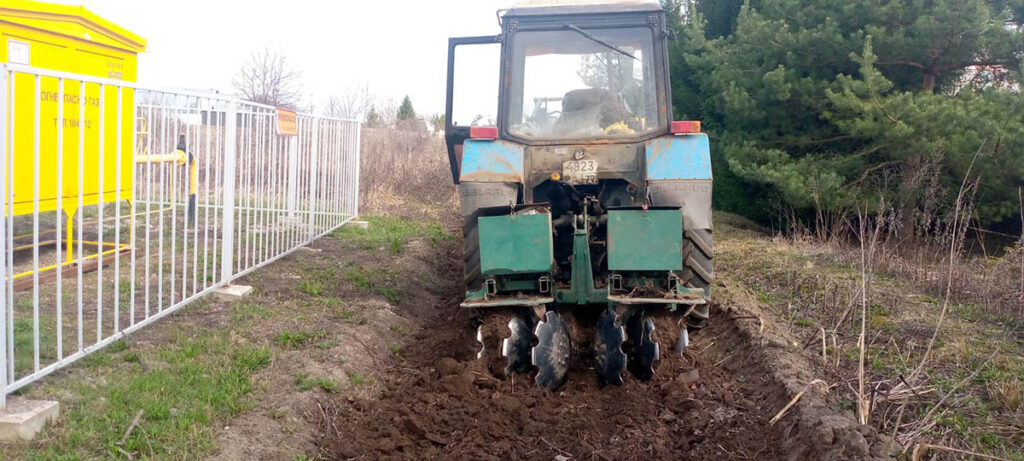
Maintaining a mineralized firebreak with a disc harrow
Disc harrowing is a method of soil treatment for various purposes, performed using disc harrows.
Disc harrows vary by structure, weight, and disc size. The discs can either have a smooth edge or be notched like a daisy-shaped disc. Daisy discs are widely recognized, not just by soil treatment experts.
The term disc harrowing can also refer to shallow tilling — discing the soil to a depth of up to 6 cm after harvesting field crops. However, disc harrowing more commonly refers to medium-depth and deep tilling — mixing, chopping, and cutting plant material to a depth of 7–20 cm. Shallow tilling exerts compressive and shifting loads on turf/stubble rather than cutting them.
Disc harrows in their design can contain a field roller, which levels and slightly compacts the soil, and can also help incorporate seeds and fertilizers into the soil.
Different conditions and tilling depths require specific types of implements, varying in weight, size, disc arrangement, mounting method, attack angle, and disc diameter.
The advantages of tractor disc harrowing are as follows:
– Faster processing speed compared to plowing.
– Breaking up sod and crop residues while mixing them into the soil to enrich it with oxygen.
– Deep and thorough impact on plant roots, sod, stubble, or even shrubs, especially with large discs. The notched edges of the discs and the angled design of the disc harrow allow the discs to slice into the soil, chopping and mixing it.
– Disc harrowing can be combined with other tasks, such as applying fertilizers and seeds.
– Spring stubble harrowing: Preparing the soil for planting after fall plowing.
– Preparing the soil for planting: Including fallow land preparation.
– Reclaiming abandoned land: Using powerful equipment with heavy disc harrows and large discs.
– Combining disc harrowing with seeding and fertilizer application.
Renting a tractor with a disc harrow is an excellent solution for owners of large tracts of arable land. After disc harrowing, the soil is well-prepared for planting most crops farmed by agricultural enterprises.
The cost of tractor disc harrowing depends on the size of the area, its location, and, most importantly, the condition and composition of the soil. Heavy clay soils, as well as overgrown and neglected fields, may require multiple passes by the tractor with the disc harrow.
Discs can be cylindrical or notched like daisies. Daisy-shaped discs are better at cutting and mixing turf or stubble. Cylindrical discs press fibrous plant material into the soil with their edges, improving decomposition conditions.
There are harrow designs with a two-row combination: the front row has daisy discs, and the rear row has cylindrical discs.
The size and weight of the discs determine the depth of soil processing and the ability to work on heavy, wet soils with clay or loam.
– Discs with a diameter of around 45 cm are considered light, around 60 cm are medium, and 85 cm in diameter are heavy.
– Discs are made from special steels and are mounted on robust bearings on the harrow frame. Some disc mount designs have a bend for shock absorption when the disc hits stones.
– The disc bearings are designed to withstand axial and radial shocks, and the force of the impact is calculated in relation to the weight of the harrow to ensure the entire harrow absorbs the shock from a single stone impacting a single disc.
Harrowing speed and productivity are the main components of successful work. The high productivity of disc harrowing units is achieved at speeds of up to 16 km/h.
For effective disc harrowing, the disc must rotate rather than sink into the soil, and the speed should not drop below 10 km/h.
When calculating the power-to-weight ratio of the tractor-harrow tandem, a power reserve of at least 25-30% over the required power of the disc harrowing unit is necessary. This is because field conditions, terrain, moisture, soil density, and structure may change during work on a single site.